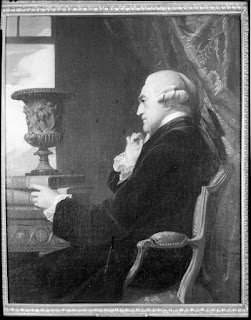Thursday, May 30, 2013 -  James Cuno,museums,Pico Iyer,travel
James Cuno,museums,Pico Iyer,travel
 No comments
No comments
 James Cuno,museums,Pico Iyer,travel
James Cuno,museums,Pico Iyer,travel
 No comments
No comments
Getty Perspectives: James Cuno and Pico Iyer Discussed Travel and Museums above the fray
by Catherine Schofield Sezgin, ARCAblog Editor
Visitors taking the tram up the hill to the Getty Center now listen to a recording by James Cuno, President and CEO of the Getty Trust, welcoming them to visit the galleries and the gardens. Tuesday evening, Cuno, now into his third year at The Getty, joined writer Pico Iyer onstage to discuss travel and museums as part of the Getty Perspectives series.
Iyer, author of a book on his reflections on Graham Greene in The Man Within My Head, was introduced to the audience as someone who "defies classification", as a "resident of LAX", and an essayist on subjects including museums. Cuno, introduced as a man "who has a lot to say about museums" and author of Museums Matter, has spent two years at the Getty emphasizing "critical thinking and integrating digital initiatives".
Cuno spoke with Iyer about his book on Greene; Iyer blaming Greene's intense influence on himself to altitude sickness in La Paz, Bolivia, and a touch of cocoa tea. "I only trust those things you can't explain," Iyer said. In recommending Greene's "The Quiet American" as "still the book to read", describing Greene as the "patron saint of the foreigner alone drifting between uncertainties" and claimed that "travel gives you a privacy you can't get at home."
Travel, like museums, they discussed, can help people understand other parts of the world.
"Museums hold out the promise that museums can introduce people to the complexity of the world," Cuno said, "And open us to tolerance."
Cuno, author of the controversial Who Owns Antiquity?, spoke of the diversity of museum visitors, pointing out that 220 million people live in countries not their own, that a city such as Chicago has a large Greek community that can view objects from Greece in local museums.
"I am very skeptical of governments making claims on individual identities," Cuno said. "My view is that people don't come from governments. Art is not made for a nation. I am suspicious of governments staking claims on a legacy they wish to identify with for grandeur."
Pico noted that when the Taliban destroyed the Buddhas of Bamiyan that they destroyed what belongs to us all.
"We're responsible for what is within our jurisdiction," Cuno said. "The Taliban felt that these objects put their cultural identity at risk."
Pico Iyer described the Getty as the sanctuary next to the rush-hour freeway: "Taking us out of the fray and bringing us back to our better selves."








